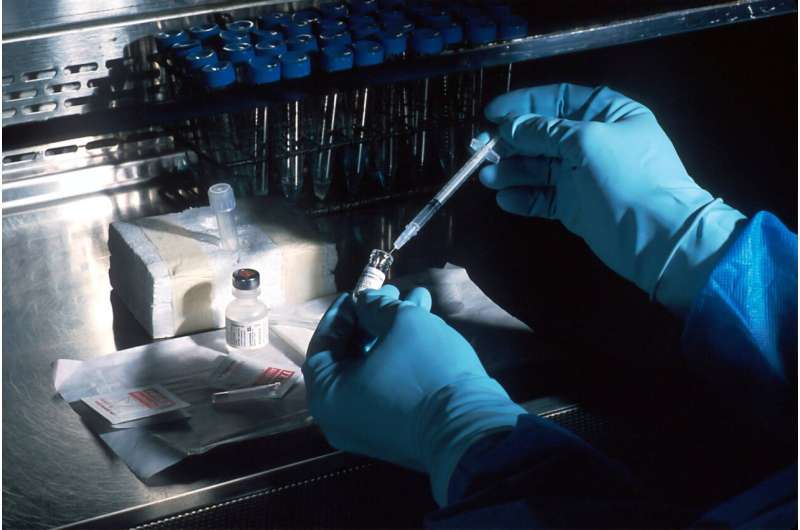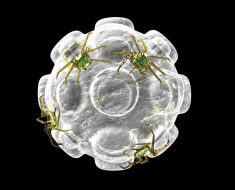
Over the past three decades, efforts to improve the results of standard treatment for patients with severe aplastic anemia have been largely unsuccessful. The phase III RACE trial, sponsored by the European Society for Blood and Marrow Transplantation (EBMT), published on January 6, 2022 by the New England Journal of Medicine, now demonstrates that adding eltrombopag to standard immunosuppressive treatment is safe and increases response rates in patients with this rare, yet potentially fatal disease.
Severe aplastic anemia (SAA) is a rare hematological disease in which the bone marrow does not produce enough new blood cells. In the past 50 years the EBMT has greatly contributed to identifying effective treatments for this disease, which was almost always fatal in the 1970s. Nowadays SAA can be treated with hematopoietic stem cell transplantation, or for patients who are not eligible to receive a transplantation, with immunosuppressive treatment. The most commonly used immunosuppressive regimen includes horse ATG (hATG) in combination with cyclosporine A (CsA). However, about 35% of patients do not respond to treatment, or respond only partially or late to treatment. Furthermore, one third of responders may eventually relapse, and another third may require chronic immunosuppressive treatment to maintain adequate blood counts.
Eltrombopag was developed to stimulate thrombopoiesis but it was subsequently shown to restore trilineage hematopoiesis. “A previous single-arm study suggested the efficacy of eltrombopag in addition to standard immunosuppressive treatment in untreated patients with severe or very severe aplastic anemia, but more robust data was needed before a change in standard treatment of patients with severe aplastic anemia could be considered,” explains Régis Peffault de Latour, co-lead investigator, professor and head of the French Reference Center for Aplastic Anemia and PNH at Saint-Louis Hospital in Paris, France. He adds, “We are very excited that the results of the RACE trial now confirm that adding eltrombopag to standard immunosuppression leads to significantly quicker and better response rates compared to standard immunosuppressive treatment alone.”
The RACE trial was sponsored by the EBMT, Europe’s collaborative peer network of professionals working in the field of stem cell transplantation and cellular therapy, with an unrestricted grant from Novartis, Pfizer and Alexion. The international, investigator-driven, open-label, phase III, randomized trial evaluated 197 patients with SAA. Patients were aged 15 years or older, had acquired SAA, and had not received prior immunosuppressive treatment. Patients were randomized to receive either standard immunosuppression (hATG 40 mg/kg x4d and CsA 5 mg/kg/d) or standard immunosuppression + eltrombopag at the dose of 150 mg/d from day +14 until 6 months (or 3 months, in case of early complete response). The primary endpoint of the study is complete response (CR) at 3 months, with CR being defined as hemoglobin 10 g/dL, neutrophil count >1,000 /µL, and platelet count >100,000/µL, according to standard international criteria.
It was shown that three months after the treatment start, patients who received the combination of hATG, CsA and eltrombopag had a significantly higher complete response rate compared to patients treated with hATG and CsA alone. These higher response rates were sustained at 6 months follow-up (overall response of 41% with standard treatment versus 68% with standard treatment + eltrombopag. Moreover, the median time to first response was 9 months with standard treatment versus 3 months with standard treatment + eltrombopag. In addition, eltrombopag was generally well-tolerated, with a similar occurrence of adverse events in the two treatment arms.
Adding eltrombopag to standard immunosuppressive therapy significantly improved event-free survival. According to Antonio M. Risitano, co-lead investigator, professor and head of the Hematology and the Bone Marrow Transplant Unit, Ospedale Moscati in Avellino, Italy: “This is important because this means the patient had a response to treatment at 6 months, did not relapse, did not require further treatment for aplastic anemia including hematopoietic stem cell transplantation.”
Eltrombopag has stem cell stimulatory properties that could potentially lead to secondary malignancies. Patients were asked to provide baseline, six months, and two-year bone marrow samples, which were analyzed for the frequency and variant allele frequency of somatic myeloid-associated mutations. Austin Kulasekararaj, co-author and hematologist at King’s College Hospital in London, UK, explains, “RACE trial shows that somatic mutations were not increased in patients receiving eltrombopag compared to those receiving the standard treatment. Although these results are promising, they do not enable to draw definitive conclusions on the risk of myeloid malignant transformation because the follow-up of two year[s] is too short.” A long-term follow-up study is planned to further explore the clinical relevance of this finding. For now, the authors warn treating physicians not to overinterpret the presence of somatic mutations and that therapeutic decisions, e.g., to proceed with hematopoietic stem cell transplantation, should be made only in the presence of robust clinical indications.
Source: Read Full Article





